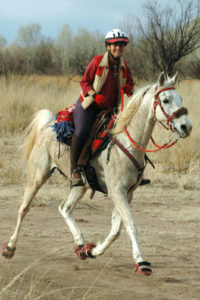A huge component of successful barefoot performance is diet. In addition to the environment they are kept in, what horses are being fed has a direct impact on hoof health, and research has shown that diets higher in sugar can contribute to greater hoof sensitivity. Read on for one rider’s experience in feeding beet pulp:
Beet Pulp Experience
By Mary Morrow
Several years ago I got back into horses after being out for a while. I was not up on feeding other than hay and oats. So I kind of followed along with my new horsey friends, and eventually added beet pulp to their diet. There seemed to be some advantages like more fiber in their diet and it was balanced. And they liked it. I didn’t seem to have any problems with my gelding, at least any that I associated with feeding. But then I acquired a filly. Things changed and it kind of hit me in the face before I realized I was having issues with both horses.
For one thing I went barefoot. My gelding had soft feet with fungus. I had been having him shod, but if he was shod just before a race, he was so tender I had to put boots over his shoes. Then he got pads under his shoes which made the fungus worse. I finally figured if I was going to put boots on him, he might as well be barefoot. Besides I have never figured why a horse is the only animal in the world that can’t walk on his own feet.
While at an endurance race, I talked to Kirt and mentioned I was feeding beet pulp. He told me to quit because it had a lot of sugar. I didn’t listen right away. I was buying beet pulp supposedly without molasses. One time I bought a bag and looked at the ingredients and it did not mention molasses so I assumed I was safe! (I should never assume. I am always wrong!) So I soaked it and what I poured off looked like maple syrup. I called the manufacture and they gave me their reps number. He said they only put enough molasses in to hold it together. I told him it did not mention molasses in the ingredients. I took the bag back and quit feeding beet pulp. Over the next years, my geldings feet got better and better and harder and harder.
My mare was another situation. As she grew up, her feet got tender. This young healthy filly I bought turned out not to be so healthy. She had always been barefoot, including a club foot, but almost from the get go, she would go lame on that club foot. I didn’t understand. With vet visits, lots of reading and research, I determined she probably had EMS (Equine Metabolic Syndrome). Symptoms included weight gain, lack of energy, skin conditions and chronic laminitis which included thin soles and lamellar wedge. Another thing that seemed strange was that flies would eat thru her fetlock joints and leave open sores. I had to buy cannon wraps to keep them off. Even then, they would still try and eat thru the wraps.
I took several years, after I took her off all carbs and beet pulp, to get her healthy enough to finally exercise enough to fight the EMS and get sound. Several months ago I decided I finally had her where I wanted her. She looked good and seemed sound. Then I listened to a friend and read an article about the benefits of beet pulp and decided to try the shreds since they would not have added molasses. Also I had had some dental issues with my gelding and needed to add some weight on him. They liked them a lot. In fact my mare would dance around until I gave them to her. But things just didn’t seem right. She got kind of sensitive again with her feet. In fact she started having inflammation in her hoofs, and she hadn’t had that since I did a race in Utah where they had 6 inches of fresh green grass that she got to eat some of. When she got the inflammation, and I kept thinking, I am not giving her anything that should cause inflammation! What’s wrong? Then I realized the only thing I had changed was the beet pulp in her diet. I took them both off!
I was talking to Gina a while later when I mentioned beet pulp and she was in agreement about the beet pulp causing problems. Then I started thinking a little deeper. In the weeks prior, flies had started eating at her fetlock joints again. I was frustrated because I hadn’t had that problem for a few years. Then it hit me, “Beet pulp!” Within a week or two of taking her off the beet pulp, the fly problem went away! Yes I still have flies, but they don’t eat at her fetlock joints and cause sores! The only thing I can figure is that the beet pulp increases the sugar in their blood and the flies can actually smell it and the fetlock joints are the most accessible!
I know this is circumstantial evidence, but it’s pretty strong for me, and I will never give my barefoot horses or any horses for that matter, beet pulp again. In fact I have half a bag that I will not continue to feed. There may be a lot of people that think beet pulp is a good horse feed, but I am not one of them anymore and will never feed beet pulp again!

